Using Personal Metrics for Greater Productivity
By True Ventures, March 15, 2011
I think it is human nature to want to better ourselves. Whether we strive to be a better parent, athlete, or software programmer, there are commonalities to how we approach bettering ourselves. In my experience, personal metrics are a great tool to use during this pursuit.
Metrics are a set of measurements that quantify results, and you’ve likely heard the quote, “you can’t manage what you don’t measure.” While there is plenty wrong with that quote (or misquote to be exact), it does point out that measuring is one way of managing. For an athlete, using metrics to track performance during a 1 mile run is fairly easy to quantify. The athlete starts out running a mile in 7 minutes 35 second, and, as he/she improves with training, the improvement is is measured by tracking and observing faster and faster lap times.
Productivity is a measurement of output from a production process, per unit of input.(1) For a knowledge worker, the unit of input is the number of hours they work, and the output could be the number of tasks completed. For most individuals, the reason to strive for greater productivity is to better use the finite resource of time.
When we use personal metrics for greater productivity, we are really saying that we want to spend less time doing things that are less of a priority, so we have more time for things that are of a greater priority to us personally. For me, spending less time reading and responding to email, browsing distracting websites, and partaking in low priority meetings means I can spend more time doing the things that are more important to me such as coding and developing new features to add value for our users and company.
What works well for me Three days a week, I commute into work via ferry. The ferry ride is roughly 35 minutes, and I usually don’t have a connection to the Internet. In order to feel productive, I pick one achievable goal for my commute. Since I don’t have access to the Internet for 35 minutes, I force myself to think about what one thing I want to accomplish during that time. If my goal requires research materials, code examples, etc – I open my browser at home before I leave and load up 5 or more pages with web pages I think I might need to reference. Once I am on the ferry, I grab a quiet spot, put on my headphones, and challenge myself to complete that one task before I arrive on the other side. I am continually surprised how productive I feel during those very brief working sessions.
35 minutes may not seem like a long enough time to make much progress, but, by forcing myself to think about a small discrete measurable unit that is achievable, I end up breaking up much larger tasks into sub-tasks that allow me to quickly measure my performance. In reality, before I get on the boat I may spend 10 to 15 minutes thinking about that task and coming up with the research materials I think I need.
Applying the same methodology throughout the work day works the same way. During the day, I try to come up with three more additional tasks that I set as goals to complete. The days I’m able to complete all of the tasks I’ve challenged myself to accomplish are very productive days for me. The days I fail to meet my goals, I can look back at my RescueTime data, and I can plainly see the other activities that prevented me from completing all of my tasks. Sometimes, the interruptive tasks are clearly more of a priority, and it is right for me to bump my initial goals. However, at other times, I realize I should have rescheduled a “quick” conversation after it became apparent that the intended five minute discussion would last much longer.
My personal metric of coming up with and completing these four daily tasks provides a simple way to measure my daily productivity. On top of these daily tasks, I have also set personal productivity goals within my RescueTime account. I have a daily goal to achieve a certain number of hours of productive work. RescueTime alerts me when I’ve met that goal. I have found that on days when my RescueTime productivity goal is met early in the day, that I have also completed my initial daily tasks earlier than I expected. I don’t stop working when that occurs, but it keeps me from feeling guilty about delving into my favorite MySQL performance blogs to find that hidden performance gem or from checking out what’s happening on Hacker News.
What works for me – TL;DR
- Start each day coming up with 4 achievable tasks, break each task down to something doable in one hour or less
- Spend no more than 10 to 15 minutes prepping for the task
- Turn off distractions (email, IM, phone, even disconnect from the intertubes!)
- Tell people you are focusing and not to interrupt. Put on headphones and don’t look up for the next 45 minutes
- Between each task take a break, get up and move around. Check your email and prep for the next task
- If you are not consistently completing your tasks, use RescueTime to help determine why!
This post was written by Joe Hruska, CEO of Rescue Time, a True Ventures Portfolio Company.

